I grew up with chickens, and we usually had a rooster with them at all times.
When we got our first chickens here in Spain, we got a rooster with them… and when he went to better pastures (literally, as he moved to our neighbours’ farm) we got another rooster instead. It never occurred to us not to keep a rooster with the flock… Keeping a cockerell with your chickens has so many advantages!
1. A Good Rooster Protects His Flock
The rooster needs to protect his chickens in case of danger. I remember Sanchez (our first rooster) going berserk when I tried catching his chickens; his son Sanchito died protecting his flock from foxes – and so did Rodriguez and the nameless little white rooster who was my secret favourite last fall. Yes, being a rooster at our place is a high-risk job.
2. A Good Rooster Keeps The Peace
Sanchez would often stand between his ‘Sanchitas’ and the younger chicks we just added to the flock, just so they’d stop bickering. They didn’t fight for long. Our overall experience with roosters is that they won’t bother about new additions to the flock; let the chickens figure out the pecking order!
3. A Good Rooster Alerts His Chickens To Food
The rooster often shows his chickens where the nice bits of food can be found. They’ve got a special call, just to tell them food is served! Our current rooster Tito gets really loud when something really special gets thrown in…
4. Good Morning! Love Your Rooster
Most rooster crow in the morning. Not always appreciated by everyone, but I love waking up in the morning and hearing my rooster crow; that means my chickens survived yet another night (and so did I, as a matter of fact), and a glorious new day is about to begin.
5. No Rooster, No Chicks
If you’re hatching chicks (whether you do it naturally or by incubating fertile eggs), you need a rooster to fertilise said eggs. Chickens will lay fresh eggs daily without a male bird around, but there won’t be any cute and fluffy baby chicks.
Why We Keep Eating Our Roosters…
The Brahma rooster we had since August 2016, Ramon, did it quite the other way around.
In case of danger, he was the first to run for safety, leaving everyone behind. Under his watch, the nameless little white rooster died (protecting his sister), and a few months later Ramon’s sister Ramona got badly hurt. In both cases, Ramon sat safely in the coop.
He was the biggest bully in the flock as well. When I opened the coop in the morning, the very first thing that happened was Ramon going after all the other occupants of the chicken run, one by one; only Ramona was safe from his bullying. Also when I introduced a group of chicks to the flock in the fall, he was the most difficult about accepting them… I had to take him apart a few times to let matters settle down in his absence.
He was just as selfish when it came to food. When I threw kitchen scraps in the run, he would often chase away all the hens before starting to eat.
And last but not least… in the past few weeks, he had taken to crowing all night long. We would lock the coop between 6 and 7, and a few hours later (before going to bed), we would hear him crow… and he wouldn’t stop until the middle of the day somewhere. Honestly, I have no idea how the rest of the flock could sleep.
So Ramon had to go. He made an excellent beercan chicken dinner (recipe to follow soon), and his bones and leftovers were used in chicken stock (there’s still a full jar in the fridge). We were happy that he was able to live his life fully until the last moment – our memory will mainly consist of him parading around in the garden, perching on branches and straw bales, and crowing… always crowing.
We still have a rooster now; Tito – he’s Sanchito’s son, and Sanchez’ grandson. After Ramon died and over the course of just one night, he seemed to grow into a real full cockerel. He was a wuss in his younger time – running away from the nameless little white rooster (who was a month his junior), running away from Ramon (who, admittedly, was double his size), sleeping on the other side of the coop so not to disturb Fatima and Ramona. However, he has stepped up and now very pretty – he looks so much like his dad and granddad!
He’s also doing great for the most part; protecting his chickens, not being aggressive towards chickens (or even the male chicks) or towards most humans, and you should hear him sing when he finds good bits of food!
Unfortunately, he has also taken to showing his dominance over toddlers which makes him a less desirable asset… and he’s also closely related to Fatima (his aunt) and more than half of the pullets in the group (Fatima’s chicks), so he’ll have to go sometime soon.
We now have three little roosters “next in line” for Big Chicken Boss: one 14 weeks old brown cockerel with green legs (really – we call him Shreck), one 10 week old black-and white one, and tiny (half bantam) Alcatraz who was all black but now turning brown.
Updates:
- Tito went to spend the rest of his life with friends… a rather short life, turns out, as he got hurt protecting his chickens from a fox one night… and the fox came back a couple of weeks later, tore down the all-new defenses (again), and ended up taking Tito with him.
- We called the 10-week-old black-and-white baby rooster we thought might make a good roo “Buster”. He turned all colorful a couple of weeks later 🙂 He’s still going strong, 5 years in.
- We added a second rooster to the flock a year or so later: George Cookelooney is my big cuddly boy. There are pictures of me and him spread all over the internet.
(last update: October 2022)

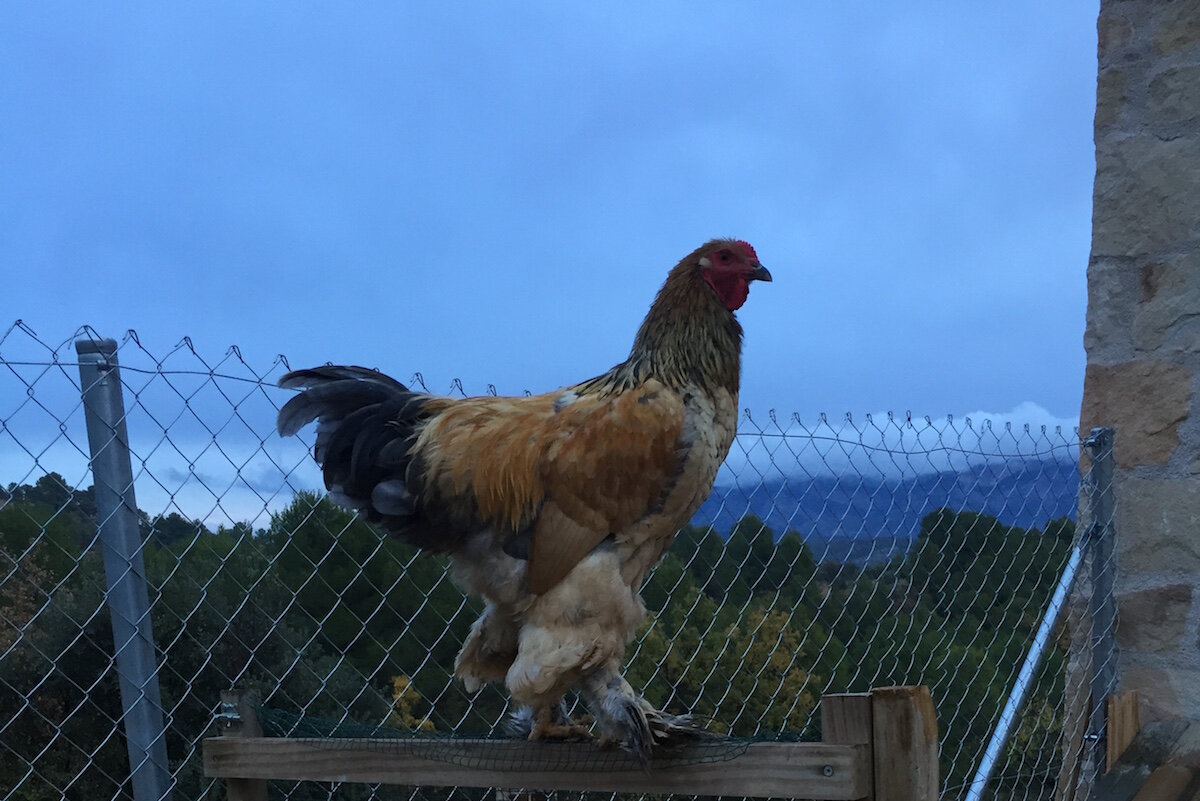
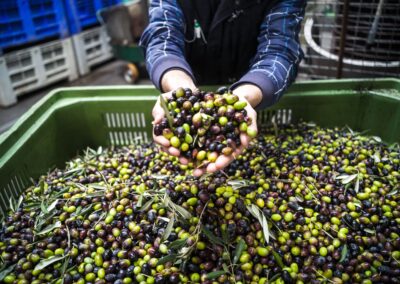

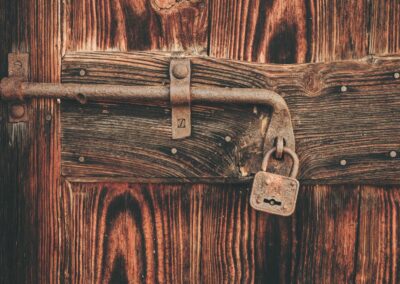
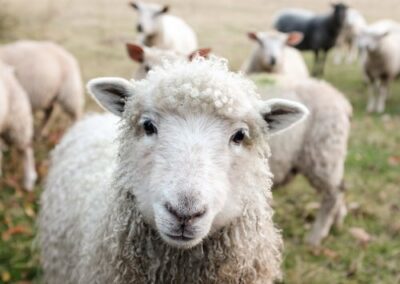
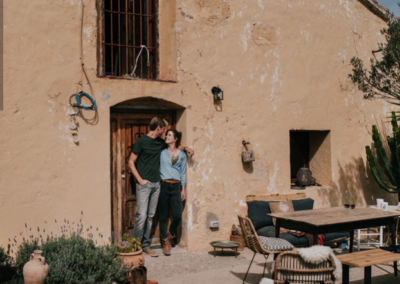
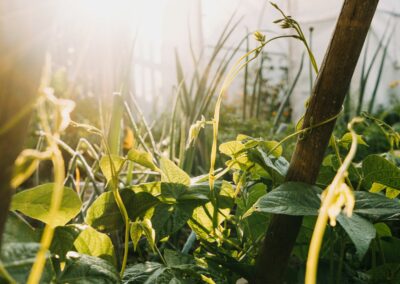
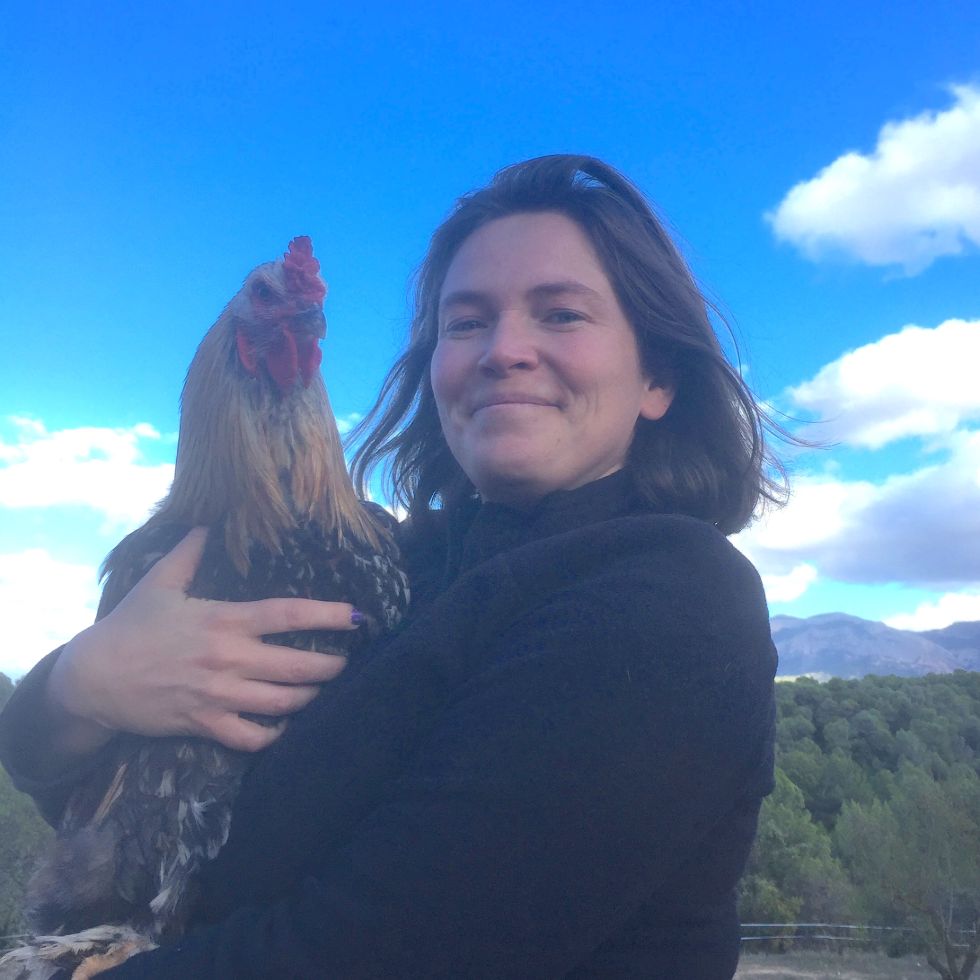
0 Comments